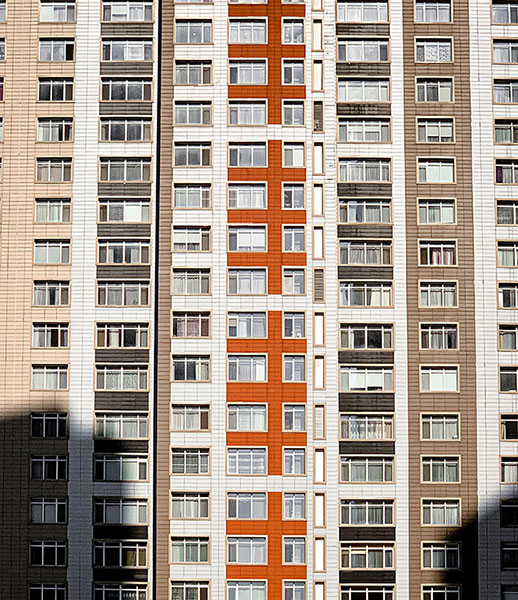#MoveTheDate
Retrofitting existing apartment buildings can reduce the energy needed for heating and cooling by 80-90%. Implementing retrofits for multi-family housing world-wide would move Earth Overshoot Day by 5 days.
What is the solution?
Improving the energy efficiency of existing multi-family apartment buildings by updating their insulation, HVAC (Heating, Ventilation and Air Conditioning), and lighting systems.
This solution improves our resource security in the energy category.
How does it #MoveTheDate?
Buildings account for approximately one third of global energy use, and one fifth of emissions. Apartment buildings have a much higher potential for energy savings than single-family homes because many households can share the benefits of upgrades to the building, and shared walls between units mean that less insulation is needed for each household.
How is it scalable?
Over 36% of global households currently live in apartment buildings, and this figure will increase further given current trends in urbanization. Most buildings are expected to stay standing many decades into the future, so ensuring that existing structures are as efficient as possible will directly affect long-term energy consumption patterns.
What is the solution?
Improving the energy efficiency of existing multi-family apartment buildings by updating their insulation, HVAC (Heating, Ventilation and Air Conditioning), and lighting systems.
This solution improves our resource security in the energy category.
How does it #MoveTheDate?
Buildings account for approximately one third of global energy use, and one fifth of emissions. Apartment buildings have a much higher potential for energy savings than single-family homes because many households can share the benefits of upgrades to the building, and shared walls between units mean that less insulation is needed for each household.
How is it scalable?
Over 36% of global households currently live in apartment buildings, and this figure will increase further given current trends in urbanization. Most buildings are expected to stay standing many decades into the future, so ensuring that existing structures are as efficient as possible will directly affect long-term energy consumption patterns.
Apartment buildings and other forms of multi-family housing such as row houses and fourplexes, are key to unlocking the sustainability benefits of cities. They typically require less energy for heating and cooling per household than their detached counterparts, they require fewer trips from utility, delivery, and garbage vehicles, and when built up as cohesive neighborhoods their density makes vibrant, walkable neighborhoods possible, reducing or even eliminating the need for cars.
Building retrofits are not only more effective at reducing energy consumption when they are done at the scale of an apartment building, but they are also a lot more cost-effective because the upfront cost can be split among many households. Retrofits generally pay for themselves after several years of reduced energy costs, making them a good investment in the long term. However, it is critical to have the correct financial systems in place to incentivize these investments when buildings are not owner-occupied: many cities are lagging behind because there is no clear way to align the incentives of tenants and landlords and have them share the benefits of efficiency upgrades. In a traditional arrangement where a building-owner is responsible for maintenance and tenants are responsible for paying energy bills, the owner has no incentive to improve the energy efficiency of the building as high energy costs are simply passed onto tenants, who would benefit from cheaper energy bills but are powerless to implement changes. Many cities are currently experimenting with systems that encourage landlords to upgrade their buildings by splitting the long-term financial benefits between tenants and building owners, as well as providing low-cost financing. A lack of data on existing energy consumption in older buildings is also often listed as an obstacle to efficiency upgrades.
You can read more about the roles that buildings play in the clean energy transition at the websites of the International Energy Agency and the Intergovernmental Panel on Climate Change.
There’s no benefit in waiting!
Acting now puts you at a strategic advantage in a world increasingly defined by ecological overshoot. Countless solutions exist that #MoveTheDate. They’re creative, economically viable, and ready to deploy at scale. With them, we can make ourselves more resilient and #MoveTheDate of Earth Overshoot Day. If we move the date 6 days each year, humanity can be out of overshoot before 2050.

